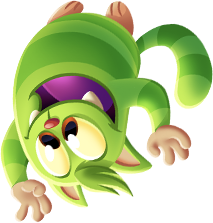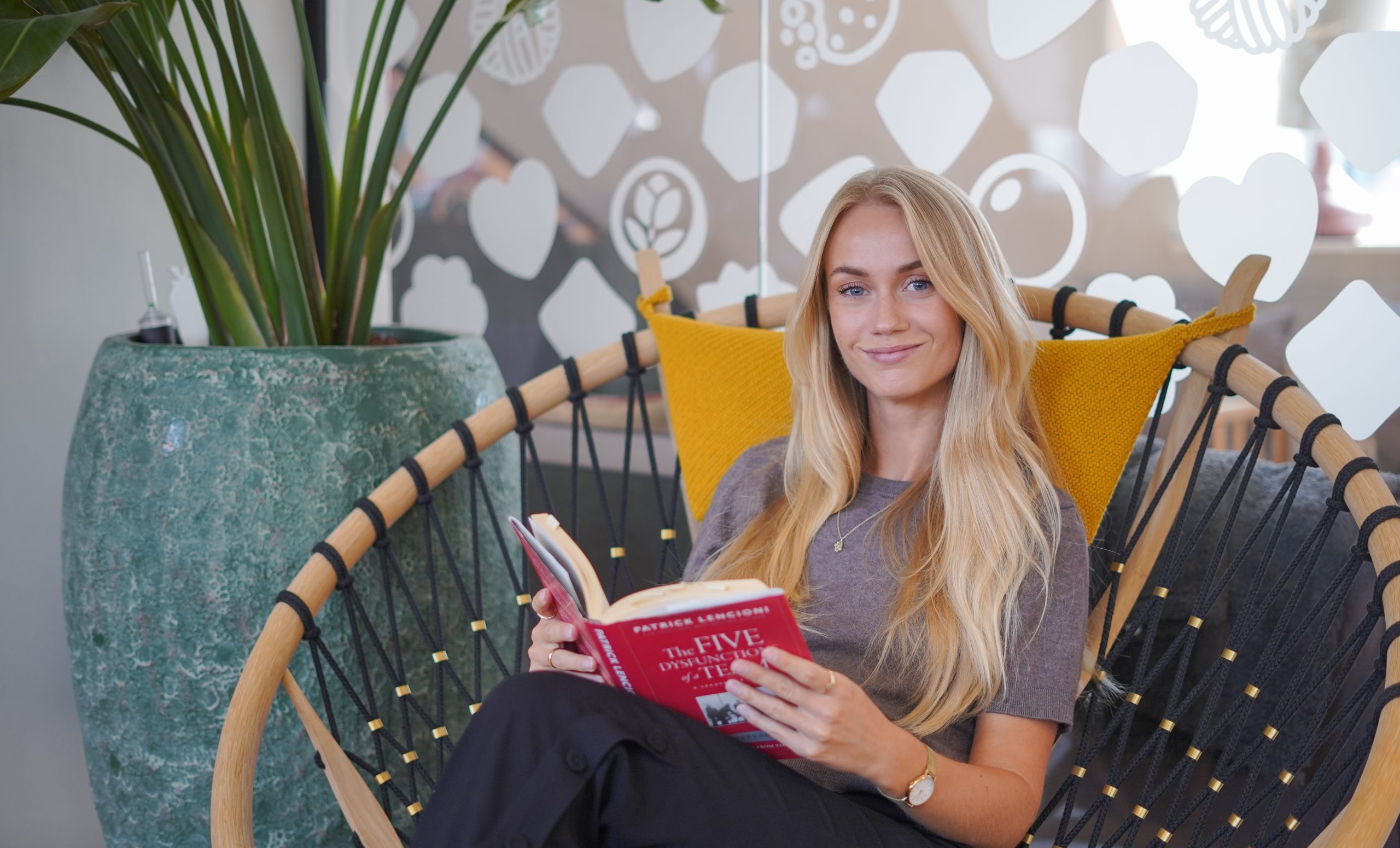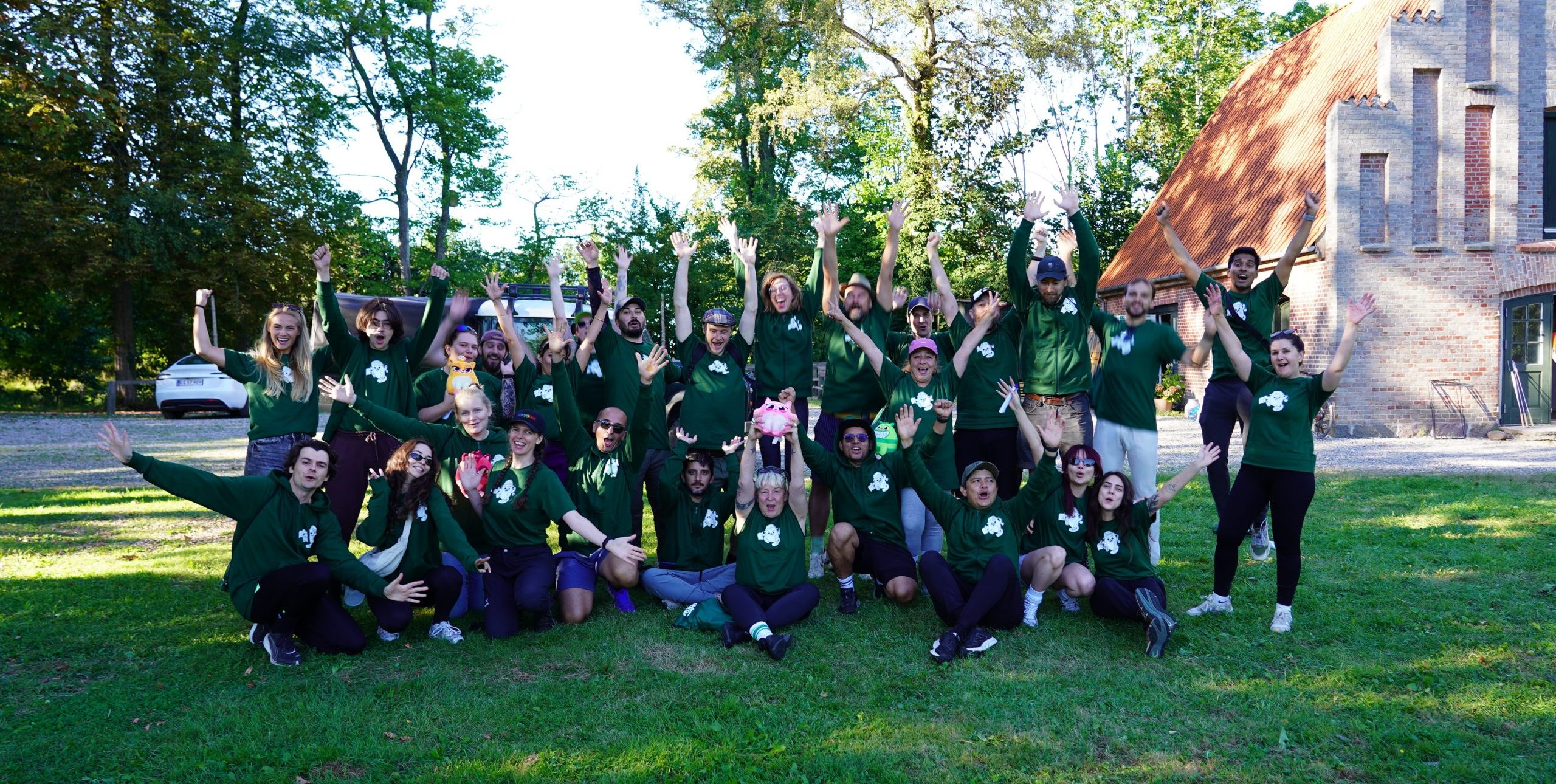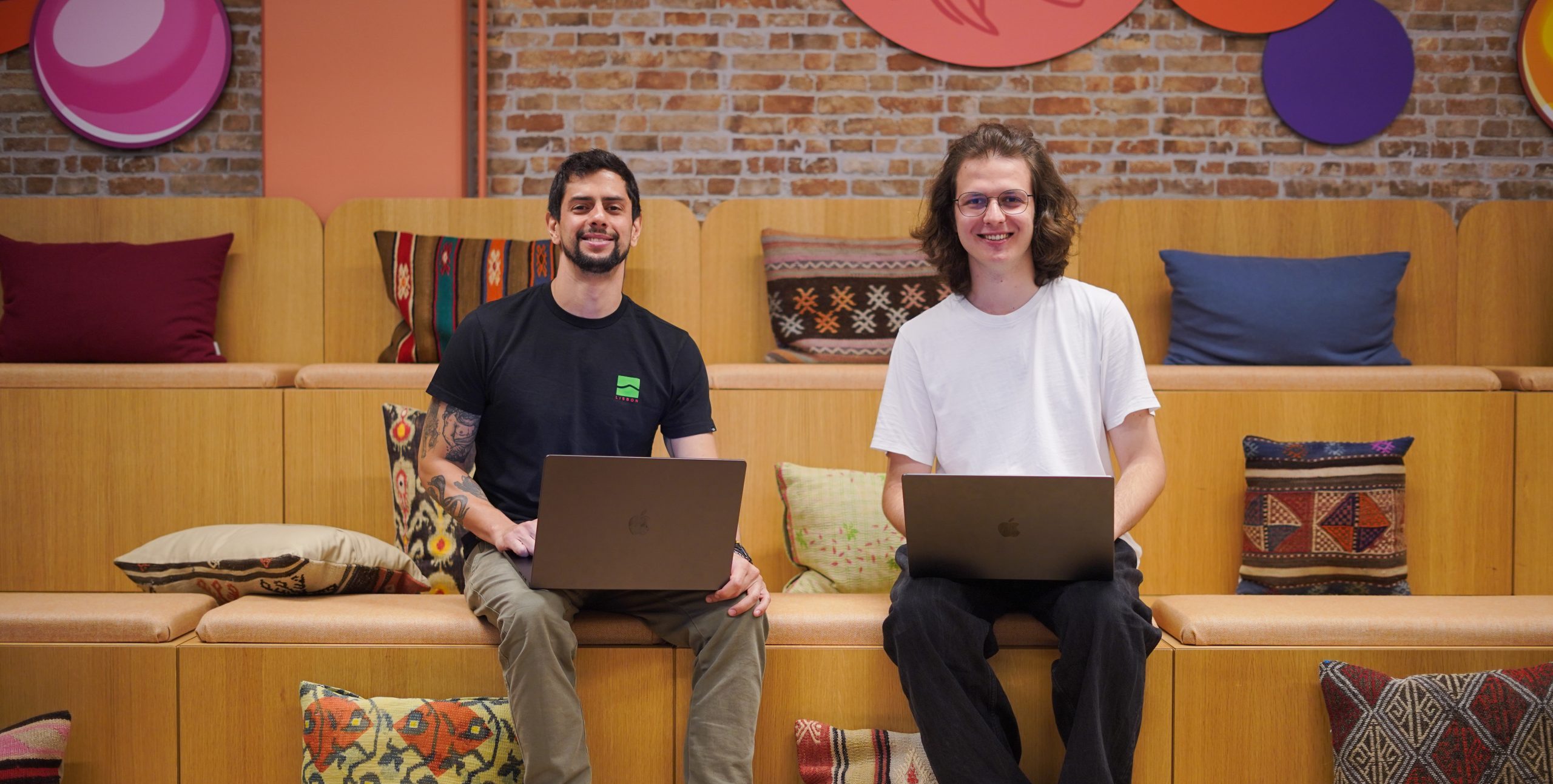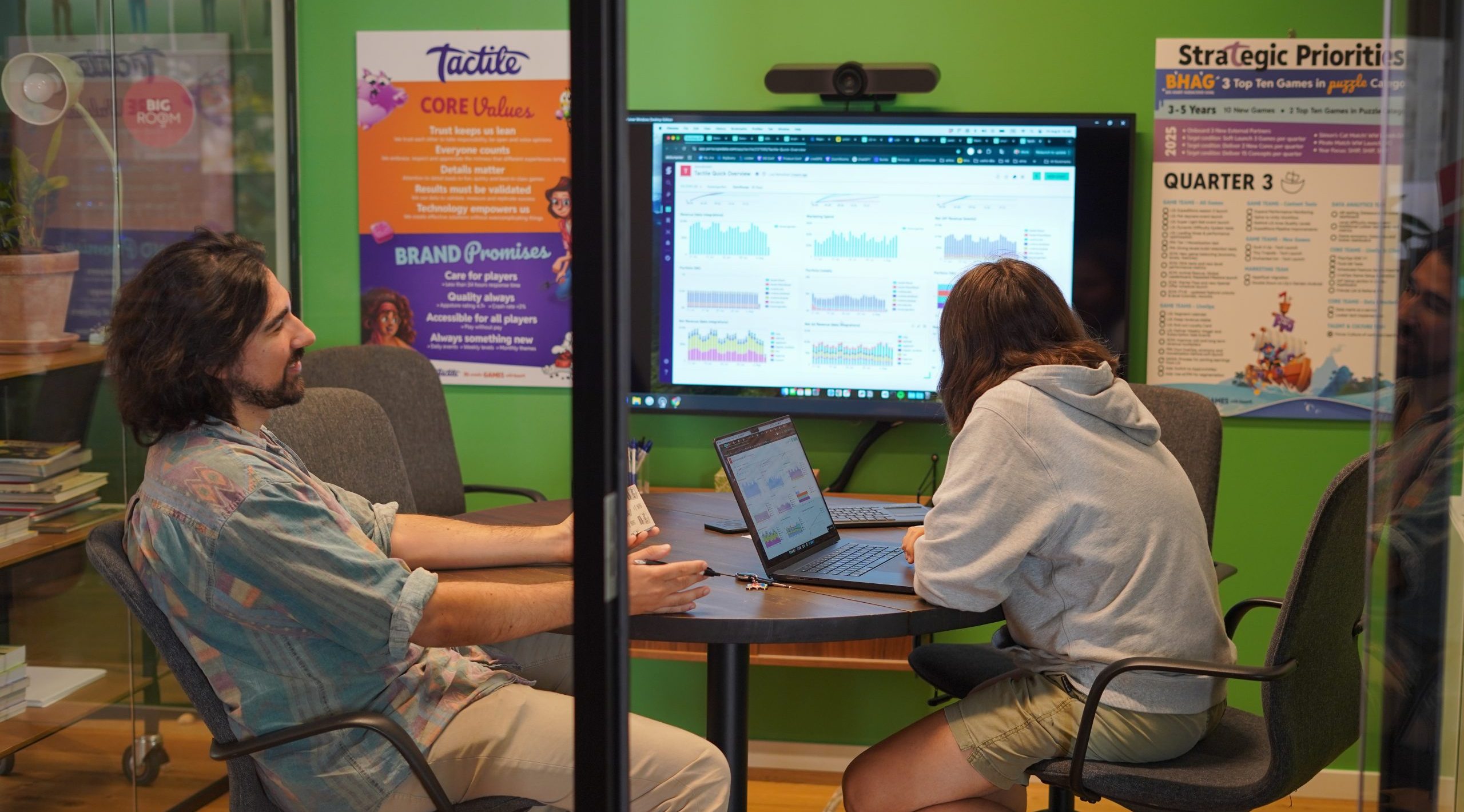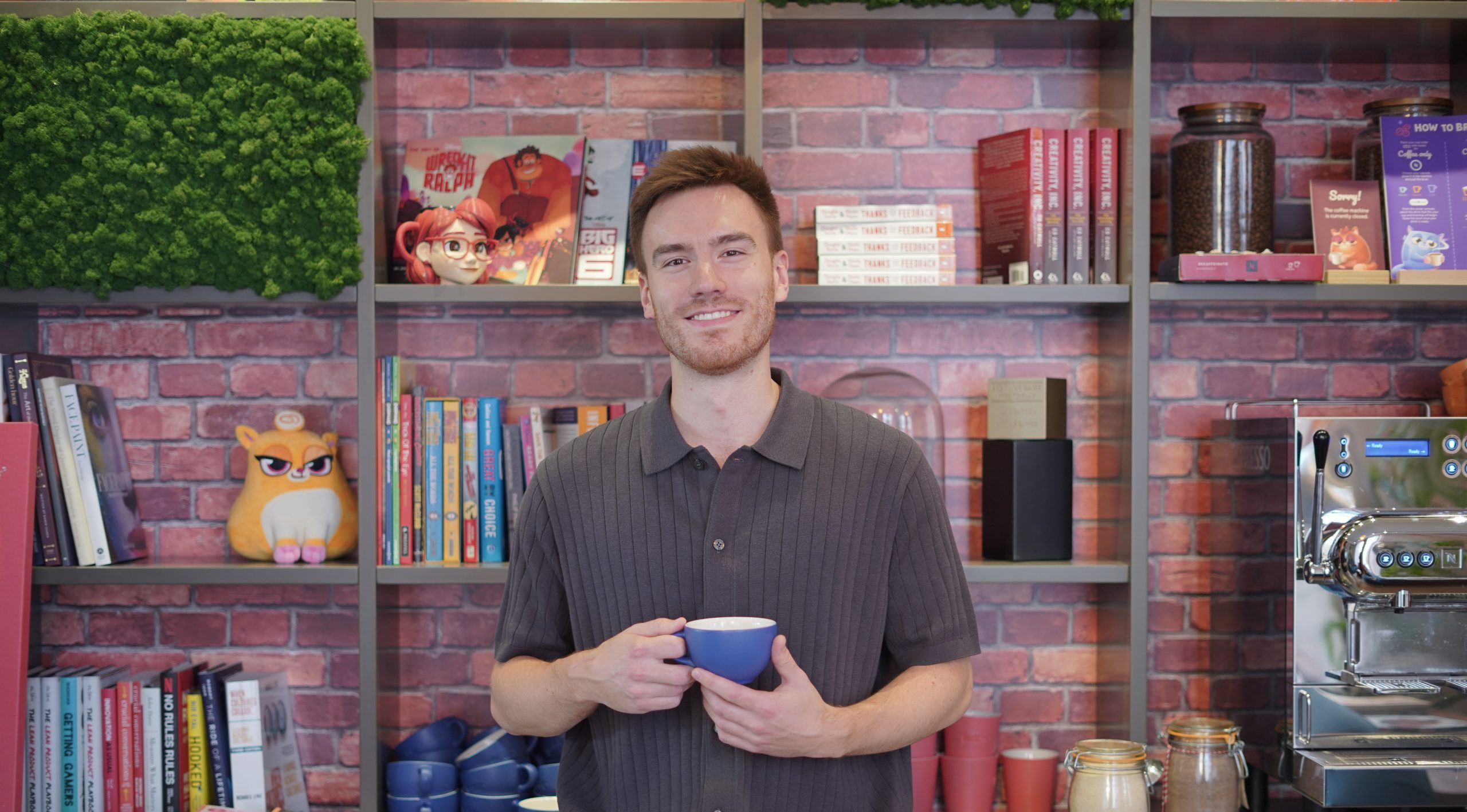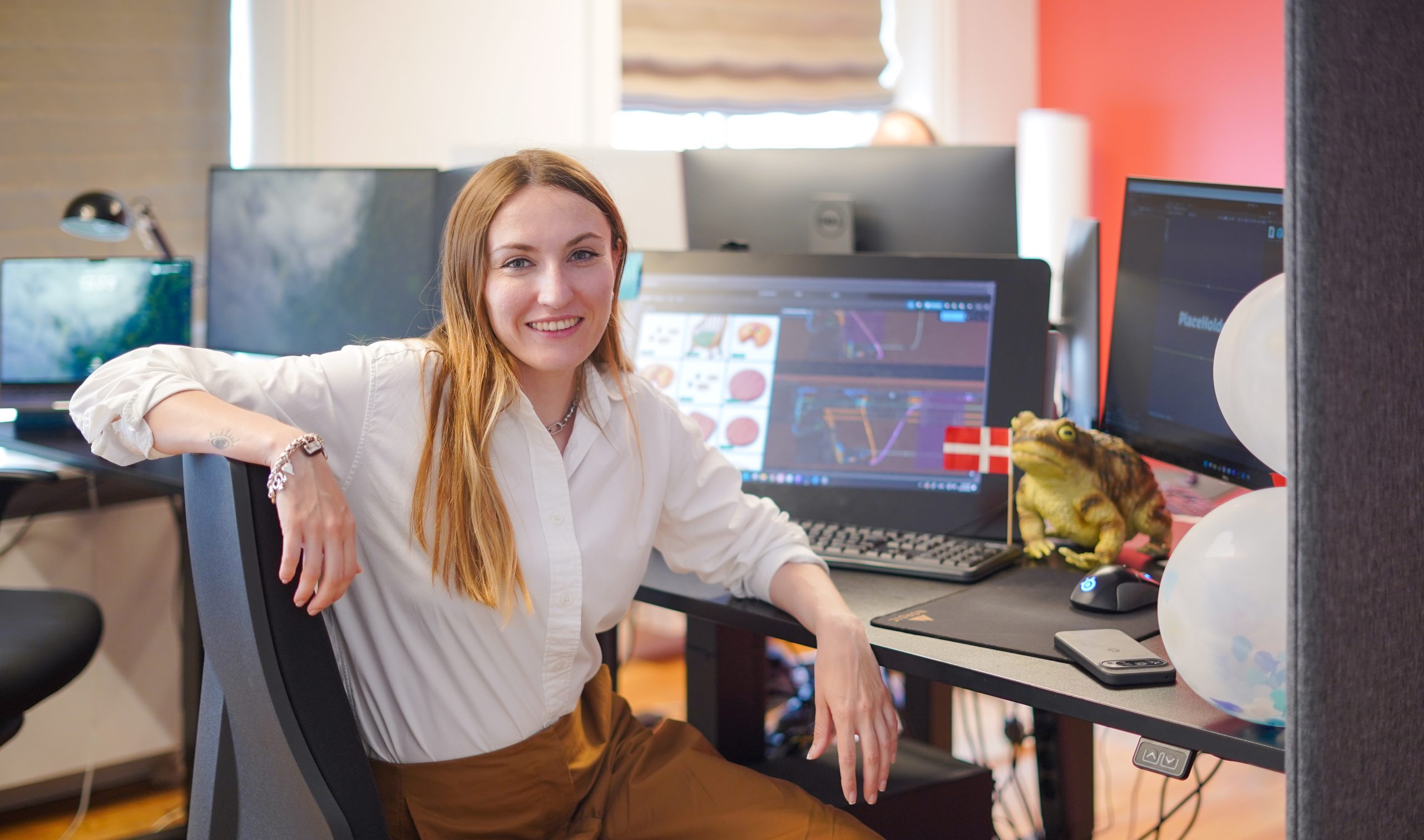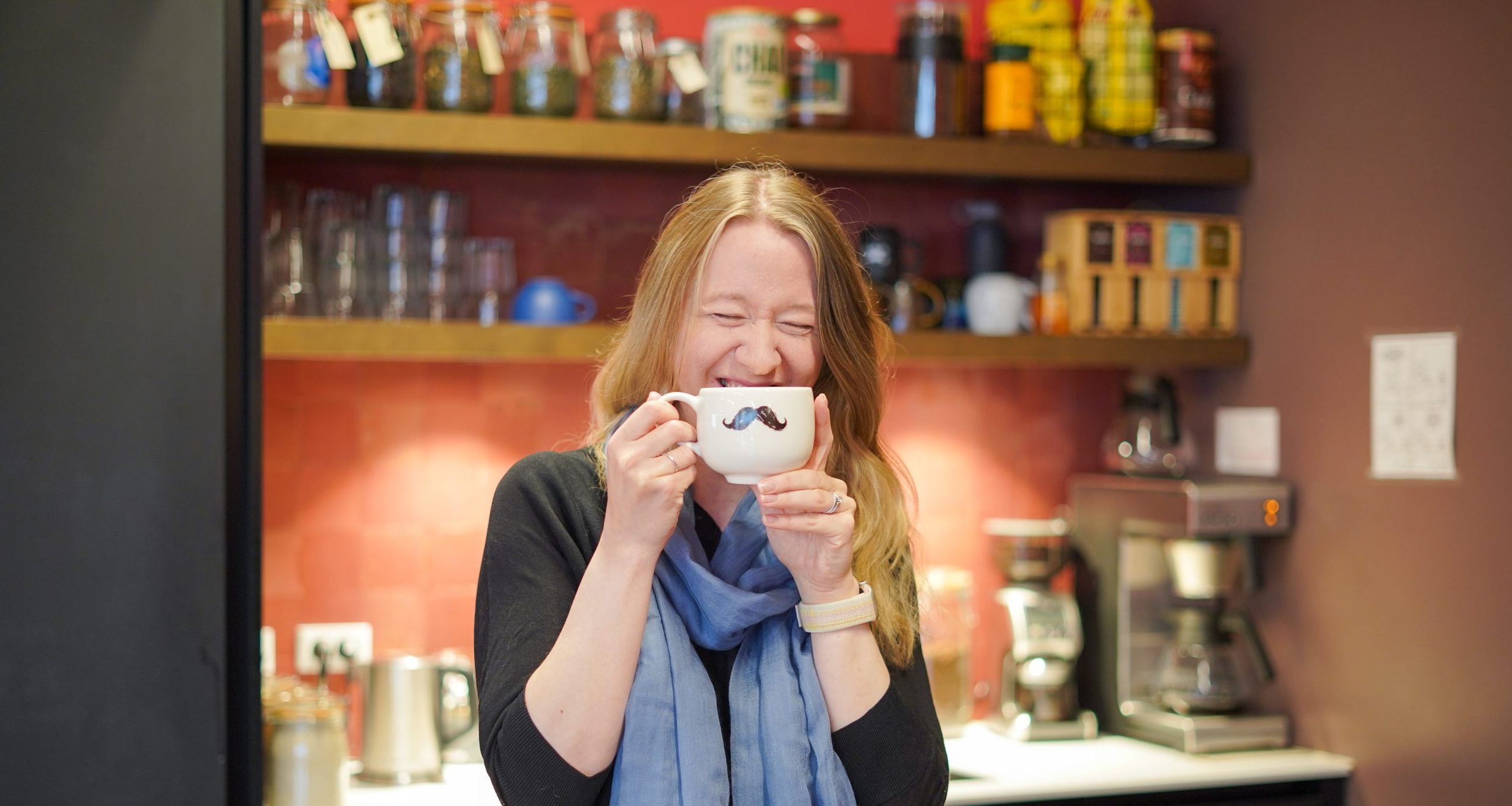Going back to our match-3 roots with Simon’s Cat Match
In 2023, 3 years after the launch of Simon’s Cat: Story Time on Apple Arcade, we felt like it was time to start thinking about the next game. This time, we really wanted to push the boundaries of what we’ve done before and explore more options with this IP. Our UK team, who has been working in close collaboration with the Simon’s Cat team since 2017, started brainstorming new ideas. They looked at the market to understand what were the general trends and which games were doing well. At the same time, Simon sent some of his own concepts in, which helped set the framework for what would later become Simon’s Cat Match.
As a company, since the launch of Lily’s Garden in early 2019, we have been focusing predominantly on developing story-driven, landscape games. Exploring within the realm of Simon’s Cat IP, having previously developed blast, swap and pop games, has given us the opportunity to see whether we can develop a competitive game in the current match-3 market. Beyond that, it has enabled us to get back to our roots – the portrait mode style games with a light meta layer and a big focus on gameplay. This has also given us the opportunity to reach a wider player audience, as the match-3 genre has a more universal appeal.
To fully understand how we tackled the challenge of building a more gameplay focused match-3 game with the help of Simon’s Cat IP, we sat down with Luke, our UK studio’s Producer, and Ali, Simon’s Cat Match Product Lead.
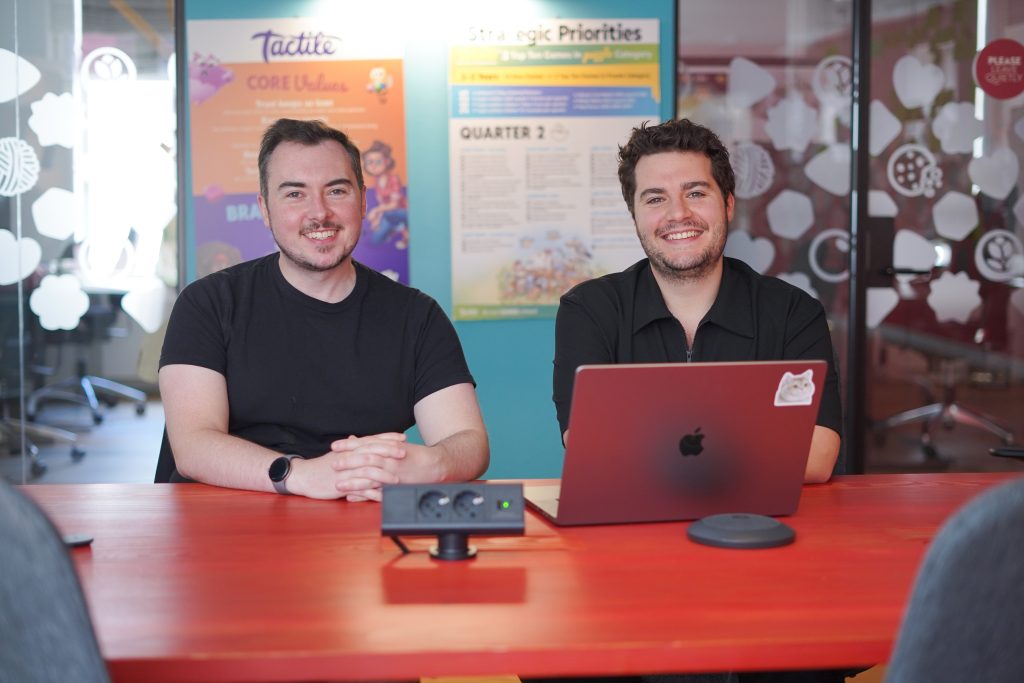
Reigniting the spark
Bringing Simon’s Cat Match to life was truly a cross-studio collaboration. At the beginning, the UK team (based in Derby) kick-started the project and created the first version of the game. After running some technical tests, the results showed promising metrics. At the same time, after wrapping up their latest project, there was a team in Copenhagen ready for the next adventure. It was the perfect match! 😄🧩
The collaboration between the 2 studios started by working on improving version 1 of the game and prepping it for another technical test. Whilst the Derby team brought the knowledge of the IP to the table, the Copenhagen team brought the expertise and learnings from our older games, such as Lily’s Garden and Makeover Match.
Makeover Match (MM), in fact, served as the basis for this new Simon’s Cat game. When we started working on MM, we invested a significant amount of time into re-developing our core gameboard tech. The new tech enables us to do a lot more with our game board, including expanding our core gameplay mechanics. This is why we were able to take MM, flip it from landscape to portrait, and start building Simon’s Cat Match on top of it.
Making the game pawesome
The initial vision for the game hasn’t changed drastically throughout the development. Match-3 levels remained the main focus of the game, but over time, the game started to develop its own identity. As this is a young game, the team was able to move faster and make bolder changes.
When the game was in soft launch, they continued researching the market with the aim of improving the initial metrics. They found that there were games with ‘find the thing’ that were performing really well, but they were mainly in black and white. Since our in-game areas were in full colour, we decided to add the colouring aspect. This felt like a great match with the Simon’s Cat IP, both from the general artistic perspective, but also because it added the +1 innovation aspect to the game that would differentiate us from competitors. On top of that, ‘find the thing’ and colouring creatives were yielding great results in marketing.
And so it felt like the most natural decision to change the meta of the game and implement these two mechanics. The colouring part in particular fits well with the original Simon’s Cat YouTube series which were in black and white. “It feels like bringing Simon’s sketches to life,” says Luke Earle, the game’s Producer. “This has made Simon’s Cat Match the most on-IP game we have ever released.”
Once we had settled on the core gameplay and meta aspects of the game, it was time to dive into the nitty gritty details. From the start, the team incorporated special level types into the game, but they wanted to add even more diversity. They once again took a look at the general match-3 market, as well as what other in-house productions were working on.
Finally, after extensive testing and research, the team decided to add Garden Battle levels to the game. The general idea behind this special level type is that the player is playing against a villain in the game – this villain then calls his minions to the gameboard, which makes it more challenging for the player to complete the level. It’s not just about reaching the level goal with a limited amount of moves, but also about doing so before the villain has a chance to counter attack. Adding the Garden Battle levels has given the team a lot of freedom to try out new things, such as implement new game board pieces (which is important for user experience and engagement) and connect the game better with the narrative of the IP (in Simon’s Cat YouTube series storyline, there is a big rivalry between Cat and Jazz, who is also our in-game villain).
The benefits of having a strong track record
“Having worked on 3 Simon’s Cat games previously, we have spent a significant amount of time on polishing them, so there has been a huge evolution of our art and animation skills over time. This is now reflected in the visual quality of Simon’s Cat Match and is something we’re extremely proud of,” says Luke.
A lot of the know-how came from our work on Lily’s Garden. In the game’s meta layer, the art team has to create 3 versions of each prop, which the player can then choose from when making renovations. This means that over the years, the team really optimized the asset creation process. This allowed Simon’s Cat team to take and apply the knowledge to their own project.
On top of that, the UK team’s close collaboration with Simon and his team, as well as the connection with the team in Copenhagen and other studios working on the art assets, allowed for the creation of a really strong feedback process. “Discussing ideas quickly and brainstorming without having to go through extra layers of management has allowed us to make improvements faster. This is why the visual part became the strongest aspect of the game,” says Ali, Simon’s Cat Match Product lead. “Having a flatter structure within teams allows for everyone to share their opinions, regardless of their background, experience or seniority.”
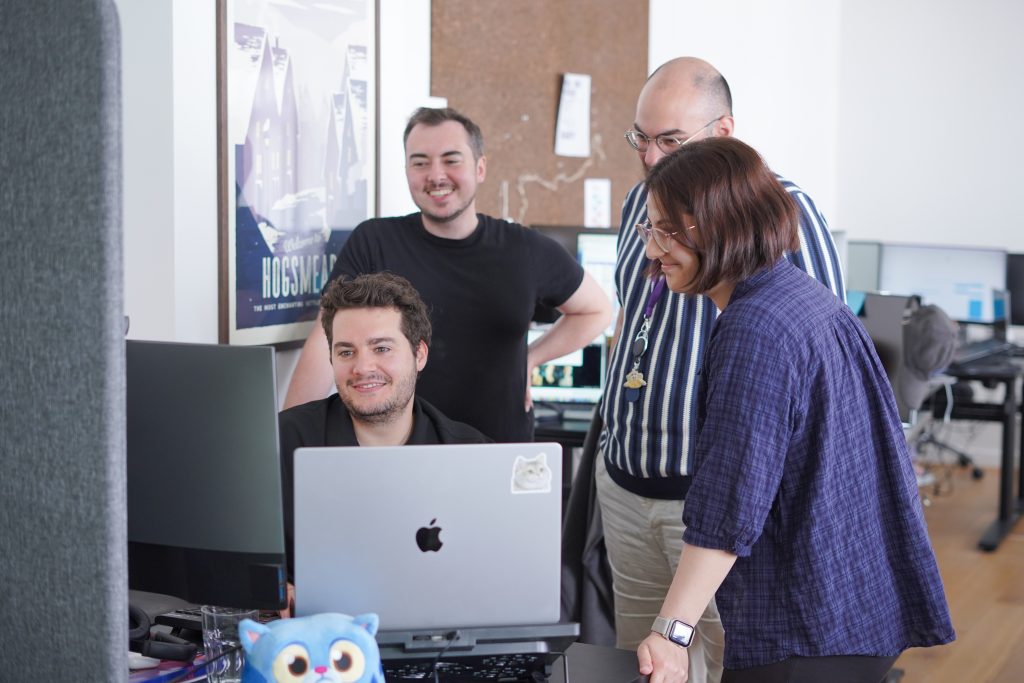
Besides nurturing our flat structure, what’s helped us improve over the years has been growing our teams with skilled new Tactilers. This includes also expanding our leadership team with the addition of Norberto (Chief of Data & Analytics) and Jacob (CMO), who brought with them strong knowledge from the casual mobile gaming industry. These skilled people have helped us to elevate the quality of our products and have made a significant difference to our ways of working. A great example of such an addition to our team is Ali himself, who has brought with him the experience and knowledge from the Turkish gaming industry. These new talents, combined with the knowledge accumulated over many years by the more ‘seasoned’ Tactilers, has allowed us to reflect, learn, reuse and innovate better than ever before.
“There’s always the danger of everyone starting to think in a similar way when the same team spends a long time together,” explains Ali. “So getting people from other projects or even other studios is really helpful, as it allows for fresh perspectives.”
ONE team
Simon’s Cat Match was launched worldwide on March 26th 2025 🥳
Since then, the teams (in UK, Copenhagen, Argentina & Tenerife) continue to collaborate closely and continuously work on improving the connection between them. It is extremely important that no team works in a complete silo.
When asked about how they ensure strong links between teams, Luke explains: “As the Producer, it is key for me to plan our time well so that everyone can meet on a regular basis and hold conversations together. This is important in order for everyone to feel like a true part of the team, to understand our ways of working, the long-term vision, short-term goals, and is looped into all decision making processes.” This applies to art, game and level design, programming, QA, analytics and product – everyone is working together to achieve the desired goals.
Beyond this, open conversations and ad-hoc meetings are always encouraged. As the team is sitting across different locations, it’s important that team members are available on Slack or to jump on a quick call, to allow for the water-cooler conversations to translate into the digital space. Despite being in different locations, Simon’s Cat Match team is ONE team. “Everyone wants the project to succeed and so we never stop looking for ways to improve the product and the ways we work together,” adds Ali.
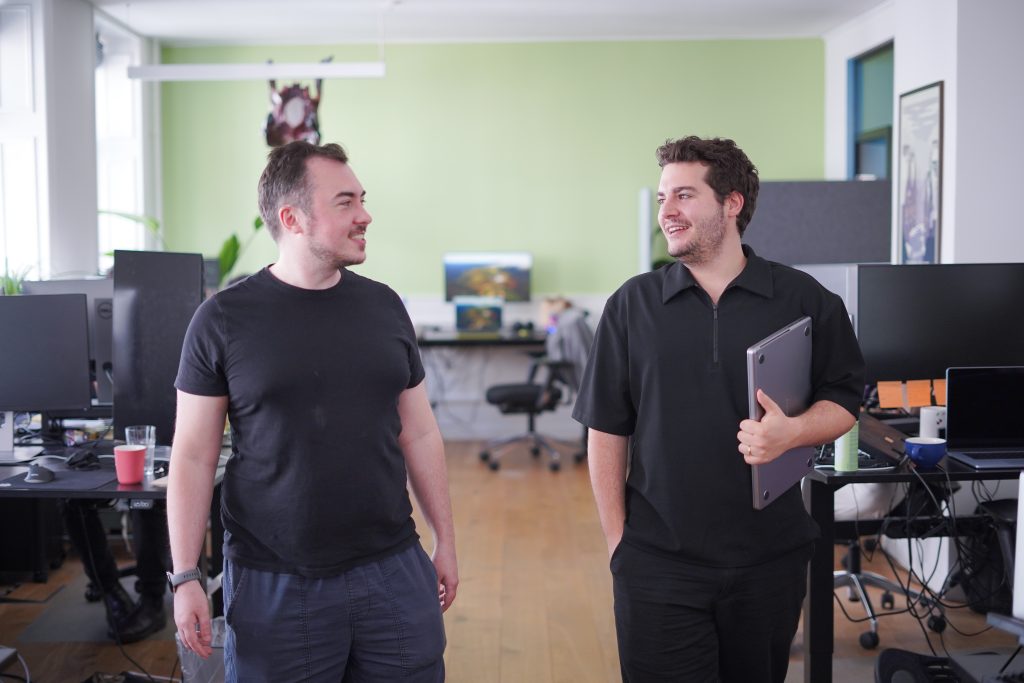
Ultimately it’s all about having the right people on the right project at the right time. Staying flexible within our roles allows us to allocate the right resources to new game projects. On top of that, everyone at Tactile is approachable and open to share knowledge from their own experiences, even if they’re not directly involved in a project. It’s all about being passionate about what we do.
“Everyone on the team loves playing match-3 games, which is crucial for me. It is extremely helpful as it creates a wider understanding of the market. When we discuss any aspect of the game, it’s important that people have informed opinions,” says Ali. When people love to play games and have plenty of experience in doing so, it enables the team to identify critical bugs in the game’s logic. It also allows us to go beyond just being game developers and to also apply the user experience perspective.
Luke wraps things up perfectly: “People are passionate about games. We are passionate about making games and we want to make the best games out there. That’s what we’re striving for and working towards. We want to play in the same field as the biggest game companies out there, but show them that success can also be achieved with smaller teams. And we want to be at the forefront of doing that.”
Simon’s Cat Match is just the first step. Stay tuned for more … Ahoy!
